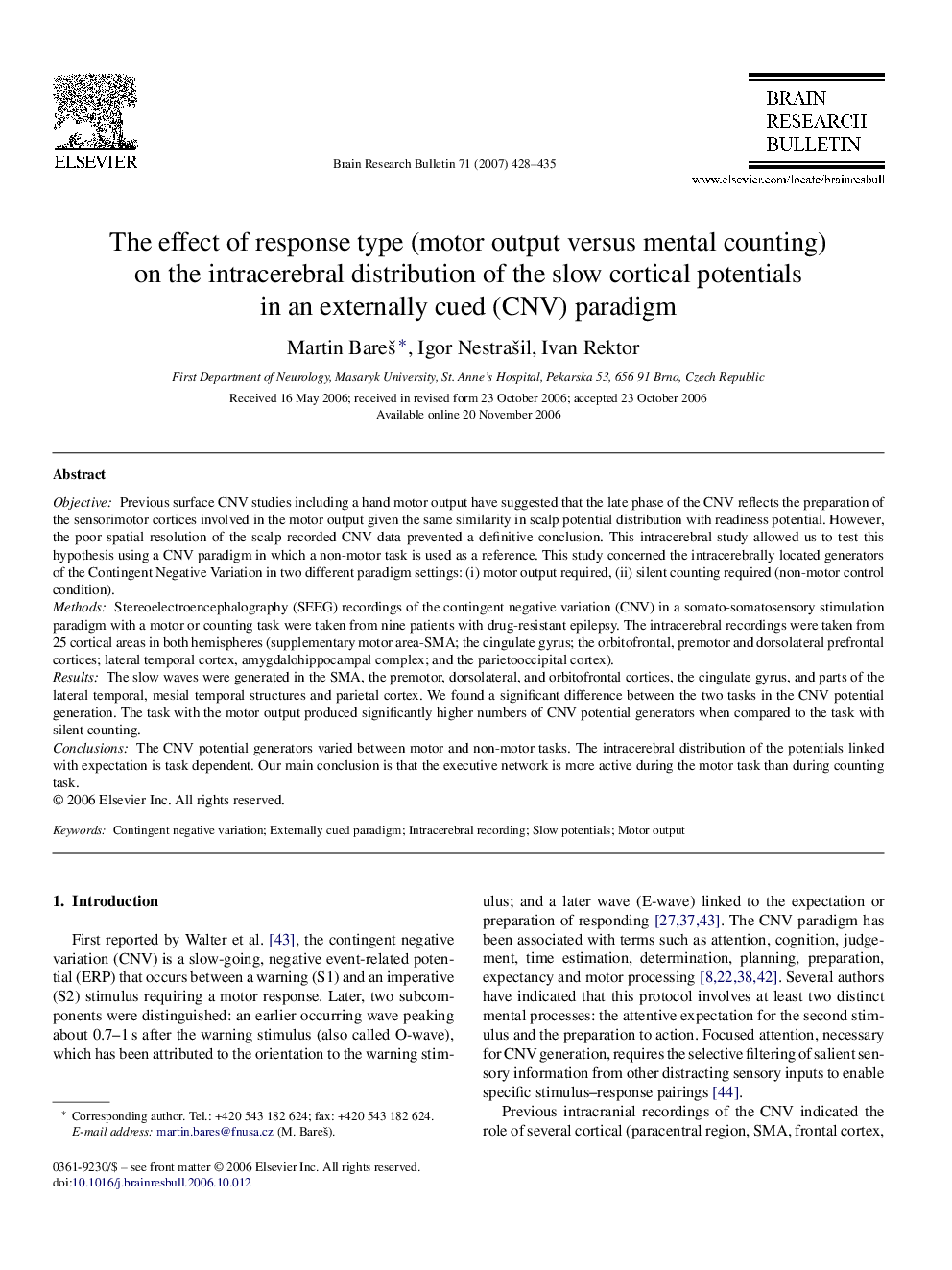| Article ID | Journal | Published Year | Pages | File Type |
|---|---|---|---|---|
| 4320054 | Brain Research Bulletin | 2007 | 8 Pages |
ObjectivePrevious surface CNV studies including a hand motor output have suggested that the late phase of the CNV reflects the preparation of the sensorimotor cortices involved in the motor output given the same similarity in scalp potential distribution with readiness potential. However, the poor spatial resolution of the scalp recorded CNV data prevented a definitive conclusion. This intracerebral study allowed us to test this hypothesis using a CNV paradigm in which a non-motor task is used as a reference. This study concerned the intracerebrally located generators of the Contingent Negative Variation in two different paradigm settings: (i) motor output required, (ii) silent counting required (non-motor control condition).MethodsStereoelectroencephalography (SEEG) recordings of the contingent negative variation (CNV) in a somato-somatosensory stimulation paradigm with a motor or counting task were taken from nine patients with drug-resistant epilepsy. The intracerebral recordings were taken from 25 cortical areas in both hemispheres (supplementary motor area-SMA; the cingulate gyrus; the orbitofrontal, premotor and dorsolateral prefrontal cortices; lateral temporal cortex, amygdalohippocampal complex; and the parietooccipital cortex).ResultsThe slow waves were generated in the SMA, the premotor, dorsolateral, and orbitofrontal cortices, the cingulate gyrus, and parts of the lateral temporal, mesial temporal structures and parietal cortex. We found a significant difference between the two tasks in the CNV potential generation. The task with the motor output produced significantly higher numbers of CNV potential generators when compared to the task with silent counting.ConclusionsThe CNV potential generators varied between motor and non-motor tasks. The intracerebral distribution of the potentials linked with expectation is task dependent. Our main conclusion is that the executive network is more active during the motor task than during counting task.
